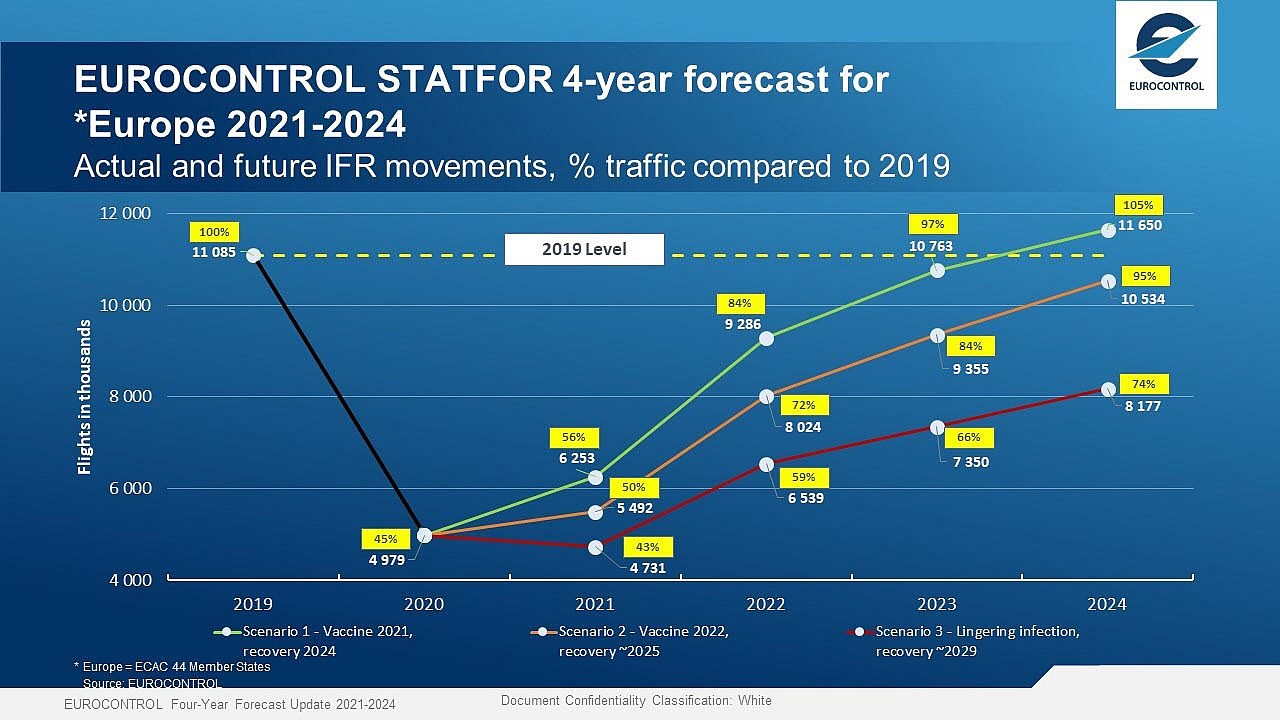EUROCONTROL has issued a new forecast looking at the possible evolution of domestic and international air traffic in Europe over the coming four years taking into account the expected evolution of the COVID-19 pandemic. The report’s key finding is that traffic is not expected to reach 2019 levels until 2024 at the earliest.
“The situation remains very challenging for European aviation. We’re heading into summer 2021 and most restrictions are still in place despite encouraging progress on the vaccination front. So while we are anticipating an uptick in summer traffic, our most likely medium term scenario envisages a coordinated lifting of restrictions by Q1 2022 between regions, which facilitates more long-haul travel. We’ll probably have around 50% of 2019 traffic for all of 2021 (5.5 million flights). By the end of next year, traffic will only have recovered to 72% of 2019 levels, and will only get back to close to where we were pre-pandemic by 2025.” - Eamonn Brennan, DIRECTOR GENERAL EUROCONTROL.
The first scenario foresees traffic returning to 2019 levels by 2024, assuming widespread vaccination take-up across the European network by summer 2021 coupled with a coordinated easing of travel restraints, and the resumption of a few long-haul flows. This scenario is aligned with the airlines’ plans for the summer months built on the pent-up demand effect, particularly for the VFR (Visiting Friends and Relatives) market. However, this first scenario is considered optimistic given the current state of vaccine rollout progress, with a coordinated approach across States less likely to be reached in the coming months.
The second scenario remains most likely, whereby 2024 traffic recovers to 95% of the 2019 figure based on widespread vaccination take-up across Europe and coordinated easing of travel restraints being reached by Q1 2022 between global regions, with more long-haul flows starting to return.
The third, most pessimistic scenario assumes traffic in 2024 will only reach 74% of the 2019 figure, with a full recovery not before 2029. This scenario envisages persistent restrictions over the coming years owing to patchy vaccine uptakes and/or renewed outbreaks of new virus strains, with passenger confidence negatively impacted.

“The pace of recovery will be driven by vaccine progress and by States adopting consistent and coherent measures to support the aviation industry and ensure that passengers feel safe to fly again. In this regard, there is an urgent need for a commonly accepted approach like the proposed EU “Digital Green Certificate”, one that can provide passengers, airlines and airports alike with the certainty they need to resume travel,” Eamonn Brennan added.

